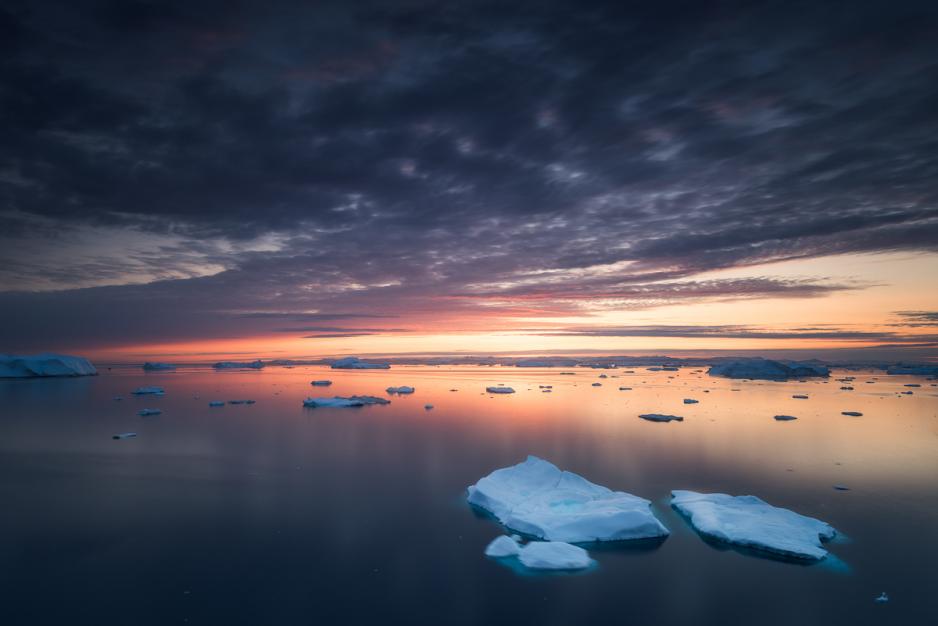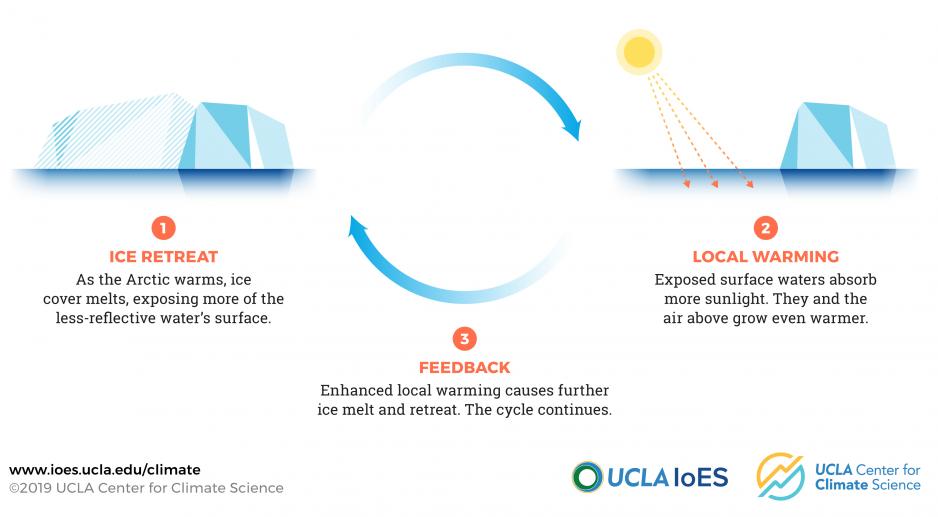New Study Narrows Window for Ice Free Arctic To As Early As 2044

Ice floes in the Arctic Ocean on the west side of Greenland (Source: Courtesy of Christian Hoiberg on Flickr.com under CC BY-NC-ND 2.0)
A new study by scientists at UCLA narrows down forecasts for an “ice-free” Arctic to between 2044 and 2067. The researchers used a new approach using sea-ice albedo, or reflectivity, to improve the accuracy of climate models predicting Arctic sea ice loss.
As the Arctic Ocean has experienced a rapid loss of sea ice over the past decade or so, numerous studies have aimed at predicting when the region could experience its first “ice-free” summer season. Especially after the dramatic drops in ice extent during the summer of 2007 and again in 2012, many scientists forecast a continued rapid decline of ice coverage. Estimates using various climate models, however, differ widely, from as early as the 2020s to as late at the 2100s. Previous efforts to make more accurate predictions e.g. included looking at temperature patterns in the Pacific Ocean.
Now, researchers at UCLA have made an attempt to narrow down the prediction window to a 25-year period in a new study published by Nature Climate Change. The new study predicts an “ice-free” Arctic, meaning ice-extent of just one million square kilometers, between 2044 and 2067. Only the most resilient ice to the North of Greenland and in the Canadian archipelago would survive, with the rest of the Arctic Ocean practically ice free for part of the year.
Why Arctic sea ice is so important
The amount of the Arctic Ocean covered in ice is crucial not only to weather patterns in the lower latitudes, including western Europe, but it also serves as a global cooling mechanism. “Arctic sea ice is a key component of the earth system because of its highly reflective nature, which keeps the global climate relatively cool,” explains Chad Thackeray, lead-author and assistant researcher at the UCLA Institute of the Environment and Sustainability’s Center for Climate Science.
Arctic sea ice waxes and wanes throughout the year, with annual maxima reached traditionally in March and minima during September. While winter ice extent has declined around 5 percent since satellite observations began in 1979, summer ice has decreased by a worrying 50 percent, with the majority of this loss occurring over just the past decade or so. As late as the late 1990s the Arctic saw as much as 6.5 million square kilometers of sea ice. By 2007 that figure had dropped to around 4 million and by 2012 just 3.3 million square kilometers of the Arctic Ocean were covered in ice.
Improving climate models
All climate models simulate the impact of CO2 emissions on Arctic sea ice. A major part of predicting when and how sea ice reacts to increased warming is sea ice albedo – the reflectivity of a surface. While sea ice and snow have a high albedo with most light and energy bouncing off it back into the sky, darker ocean water has a lower albedo absorbing the majority of light and energy. This then leads to a feedback loop – as more ice melts more energy gets absorbed, warming the ocean further which in turn leads to more ice melting and so on.

Explaining sea ice albedo and feedback loops (Source: Courtesy of UCLA Center for Climate Science)
Studies vary in how they consider and include sea ice albedo in their predictions resulting in the wide range of forecasts.To improve the accuracy of ice-free predictions the UCLA researchers compared ice melt predictions of 23 global climate models to real world satellite observations. They then focused on the six models that best predicted actual historical results. This allowed the team to narrow the prediction window for an ice-free Arctic down to a 25 year period.

Graphic showing “ice-free” predictions by 23 models. The researchers selected the six most likely scenarios. (Source: Courtesy of UCLA Center for Climate Science.
Interestingly, this latest study relies on research conducted by one of the authors, Alex Hall, almost fifteen years ago which looked at snow albedo and also compared model projections with real-world observations to determine the most accurate models. This approach, which has since become a standard in trying to optimize climate models, was now applied to sea ice albedo.
How much time is left?
Arctic sea ice is closely tied to the idea of “runaway greenhouse effect” where even with a fast and dramatic reduction in emissions, the climate system has become so unbalanced that it is too late to stabilize it. Once Arctic sea ice has completely melted it would be very difficult to get it back as it enters a kind of unstoppable feedback loop.
“Once you lose that much ice cover, the ocean begins to take up much more heat than it normally would by absorbing more solar radiation,” explains Thackeray. “Essentially this warms the ocean which promotes even more melt. It becomes a sort of runaway cycle until you have no ice left. Once we’re below that threshold it’s very hard for ice to regrow and would take a substantial amount of time.”
As to how close the Arctic Ocean is to seeing its first ice-free summer, Thackeray says: “It’s almost at a point of no return or very slow return.”

